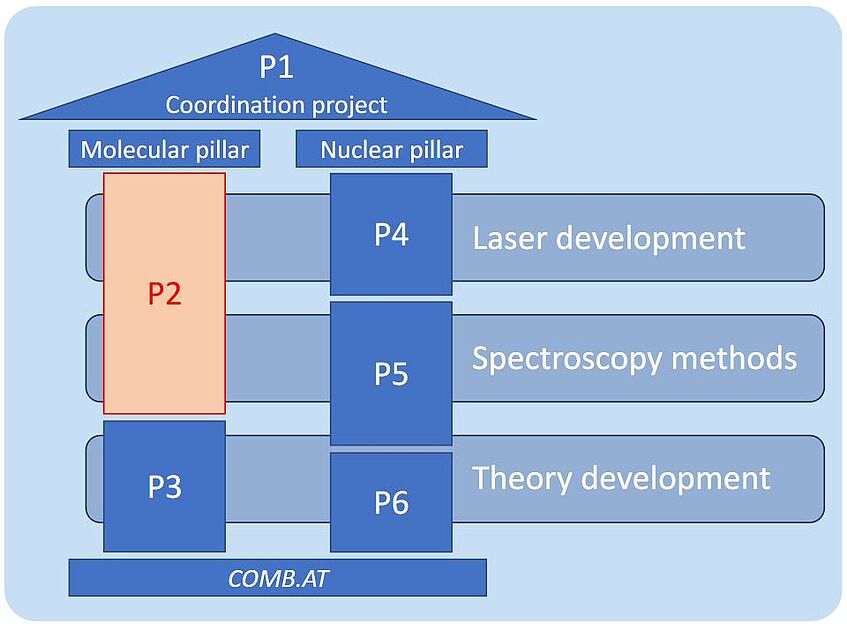P2 OAM-enabled transitions
In the realm of high-precision experiments, measuring narrow transitions in molecules, atoms, or nuclei is crucial for establishing precise frequency references. These transitions are sensitive to minute changes in fundamental constants, making them invaluable for cutting-edge research. However, a fundamental challenge persists: transitions are either narrow and weak or wide and strong.

At COMB.AT, our primary objective is to overcome this challenge by efficiently coupling light to narrow transitions, enhancing light-matter interaction to elevate precision measurement sensitivity. We achieve this by employing "twisted" light, which carries orbital angular momentum (OAM), to probe transitions that are electric-dipole forbidden yet magnetic-dipole and electric-quadrupole allowed.
In conventional dipole-allowed spectroscopy, the probing beam carries zero Orbital Angular Momentum (M = 0) and the probed transition needs to satisfy dipole-selection rules. For diatomic heteronuclear molecules, transitions which shift the rotational angular momentum by ±1 are allowed. The magnetic quantum number m is subject to the selection rule Dm =0, ±1. When the probing beam carries OAM, then the selection rules allow for a broader range of transitions with |Dm| ≤ 2, leading to additional allowed transitions. In this part of the Special Research Program, we plan to experimentally verify the existence of transitions with Dm = ±2 when probing with light carrying OAM. To this end, we will have to lift the degeneracy of the molecular rotational states with respect to the magnetic quantum number by including an electric field.
Team of P2
The sub-project P2 “OAM-enabled transitions in CS-molecules” is led by Oliver H. Heckl at the University of Vienna. Monika Bahl, who has extensive experience with generating and modeling vortex-beams and has also gathered experience with supervision of students, adds her expertise to the project as a postdoctoral researcher. Together with Mirela Encheva, she is supervising two graduate students who are working on the experiment: Tom Jungnickel and Timo Gaßen.

